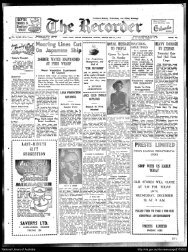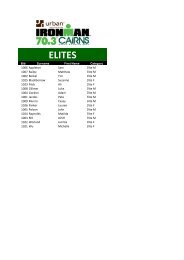Sample Prompts for the STAT Written English
Sample Prompts for the STAT Written English
Sample Prompts for the STAT Written English
Create successful ePaper yourself
Turn your PDF publications into a flip-book with our unique Google optimized e-Paper software.
Questions 1 – 3<br />
UNIT 1<br />
The best way to grasp <strong>the</strong> human significance of photography is not to think of camera, film<br />
and tripod as something external to human nature, but as evolutionary developments — as<br />
much a part of human nature as one’s thumb. A deficiency existed, of sorts, in <strong>the</strong> way our<br />
sensory and in<strong>for</strong>mation storing capacities functioned. They had limits, and photography was<br />
one way to overcome those limits. The limit in human functioning is simply this: though we<br />
can see things very well, we cannot reliably bring up <strong>the</strong> image <strong>for</strong> repeated viewing. Instead,<br />
visual images are incompletely stored in memory, often in a highly schematic <strong>for</strong>m, and<br />
subject to decay and distortion.<br />
Moreover, memory is private: it does not directly take <strong>the</strong> <strong>for</strong>m of an external object that<br />
o<strong>the</strong>rs can see. And when <strong>the</strong> person dies, all of <strong>the</strong> images stored in his or her brain vanish.<br />
It is <strong>the</strong> perishability of our visual experience that led humankind to seek to fix it by placing<br />
it on a more permanent record, more available to public scrutiny than <strong>the</strong> brain. A first<br />
solution to this problem came about through <strong>the</strong> development of skills in painting and<br />
drawing. Humankind had <strong>the</strong> capacity to depict what was seen by representing those <strong>for</strong>ms<br />
and colours on an external surface, such as <strong>the</strong> wall of a cave, or papyrus, silk or canvas. But<br />
it required a special talent to do this, which only a few people possessed.<br />
1 The limitation in human functioning referred to in <strong>the</strong> first paragraph is best described as an inability to<br />
A view things accurately enough <strong>for</strong> all purposes.<br />
B process instantaneously a complete visual image.<br />
C store a detailed image of something one has seen.<br />
D recall visual material accurately, particularly over a period of time.<br />
2 The writer uses <strong>the</strong> example of a person’s thumb and evolutionary development (lines 2 – 3) to make <strong>the</strong><br />
point that <strong>the</strong> camera<br />
A has replaced part of humankind’s sensory capacities.<br />
B is essentially an extension of humankind’s sensory capacities.<br />
C has utilised sensory capacities in humankind which were previously undeveloped.<br />
D has been so widely accepted by humankind that it has become a crutch on which we are dependent.<br />
3 The additional limitations of memory described in lines 9 – 12 relate to humankind’s<br />
A need <strong>for</strong> self-expression.<br />
B insistence on <strong>the</strong> right to privacy.<br />
C desire to communicate observations.<br />
D need to keep detailed records on individuals.<br />
3<br />
5<br />
10<br />
15











